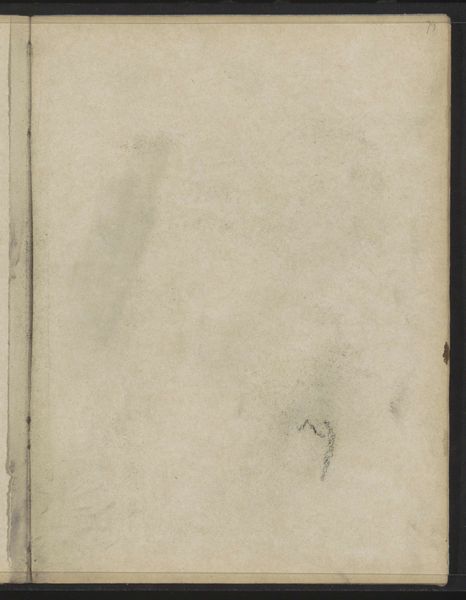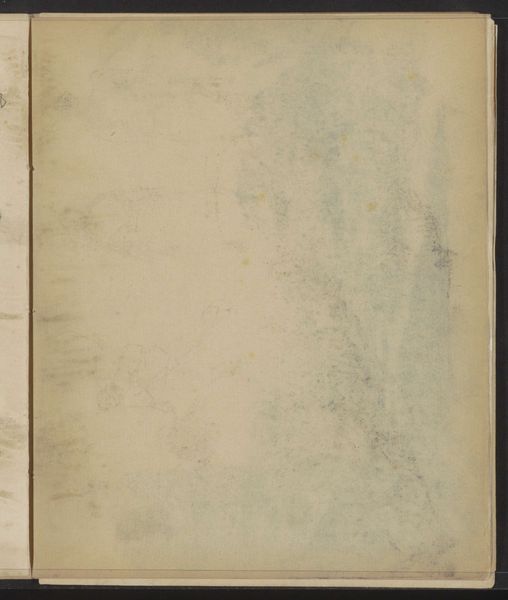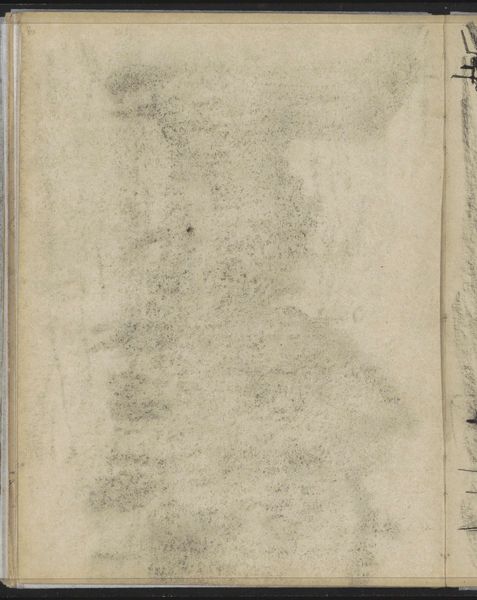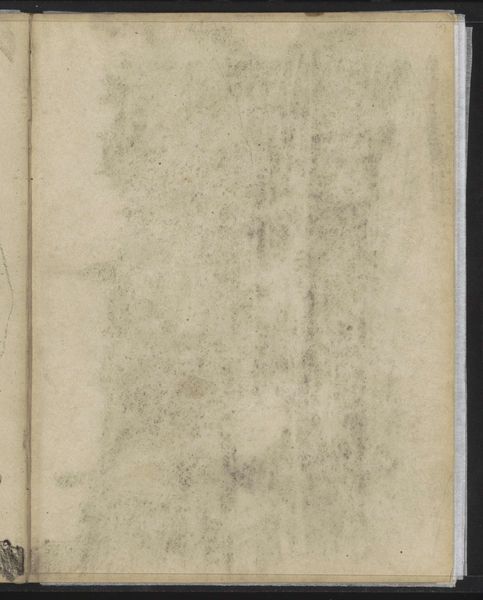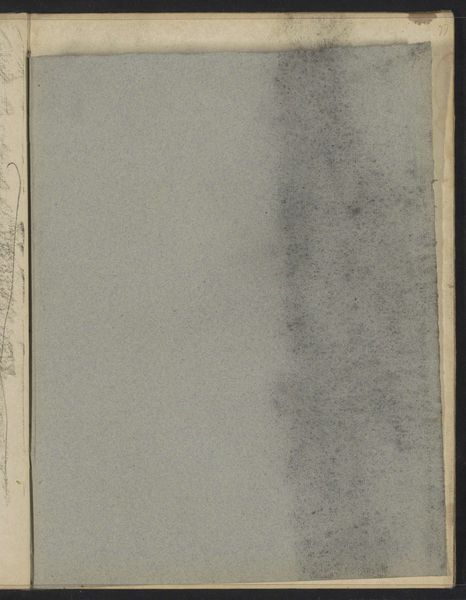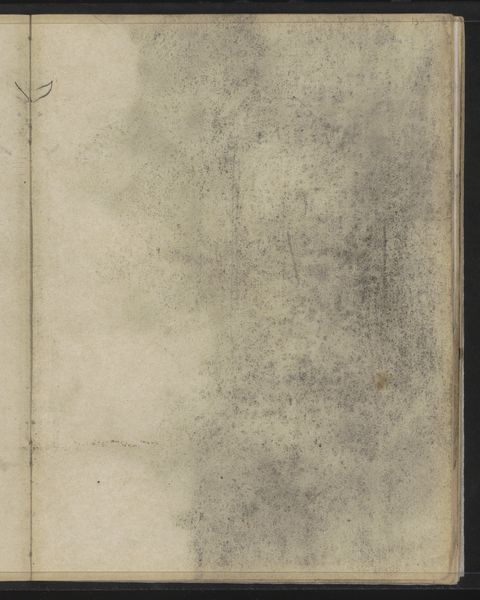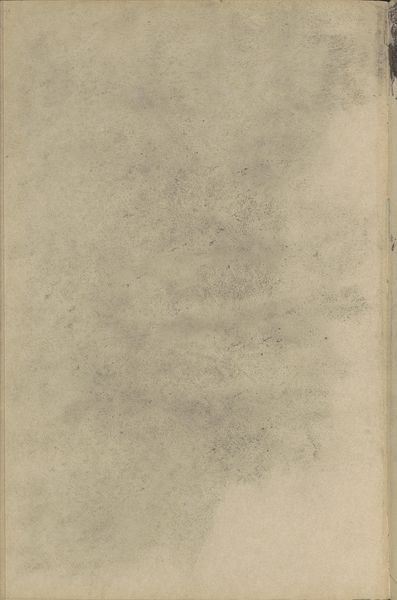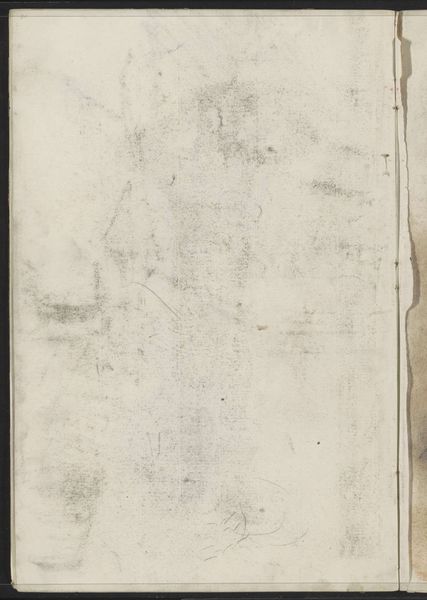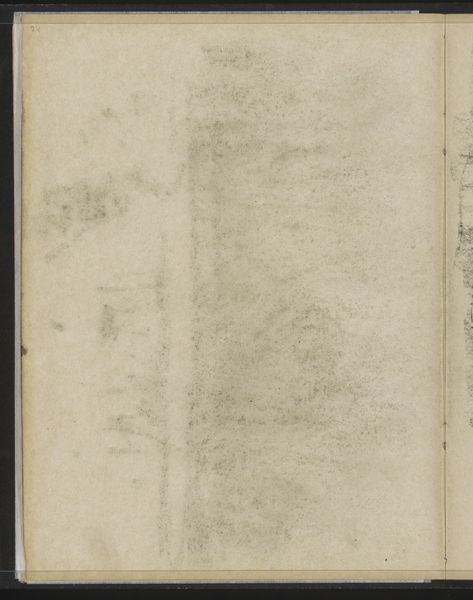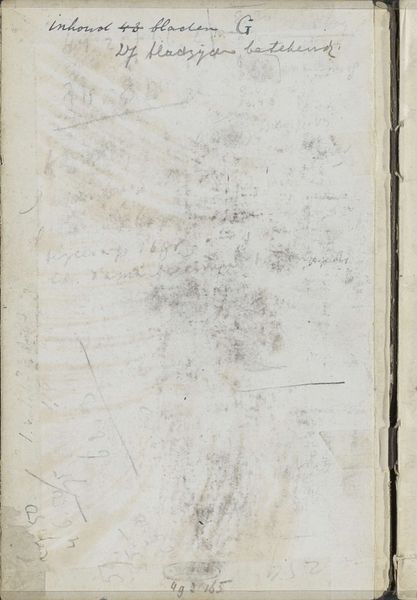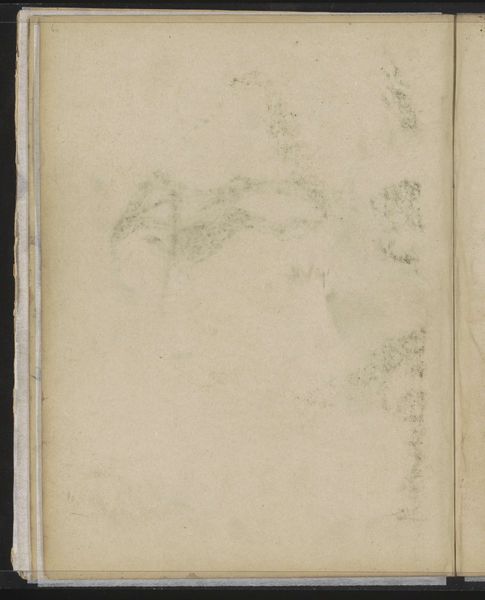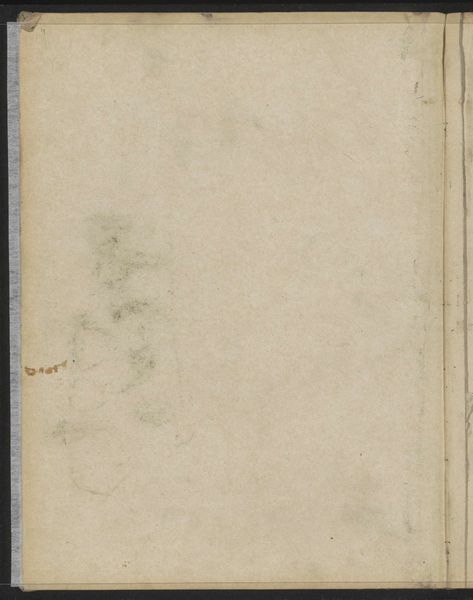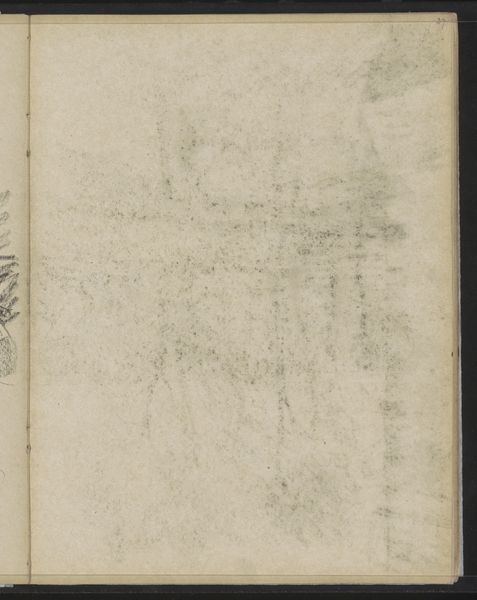
drawing, paper, graphite
#
portrait
#
drawing
#
impressionism
#
sketch book
#
paper
#
coloured pencil
#
graphite
#
sketchbook drawing
Copyright: Rijks Museum: Open Domain
Curator: Here we have a drawing titled "Abklatsch van de krijttekening op pagina 63," created by Willem Witsen sometime between 1887 and 1891. It’s currently held here at the Rijksmuseum. What are your first impressions? Editor: Haunting. It feels like looking at a memory, smudged and faded over time. The softness and subtle tonality make it seem fragile, as though it might disappear completely. Curator: Indeed. "Abklatsch" means something like "reprint" or "transfer." The work provides insight into Witsen's artistic process, particularly his use of sketchbooks. Artists like Witsen viewed sketchbooks not merely as repositories for preparatory sketches, but as portable studios in their own right, where ideas could be developed and refined. It shows the way the artist could revisit and rework images. The very nature of a transfer implies a layered engagement with the subject. Editor: The muted graphite and colored pencil contribute to that sense of a fleeting image, too. You get this sense of ephemerality. Was there a conscious decision to evoke that in his imagery, do you think? Curator: I think so. During the late 19th century, with rapid urbanization and industrialization transforming the social landscape of Europe, artists turned to capturing transient moments. The sketch is not about flawless representation but capturing the impression of a particular moment. And it fits in well with the Impressionist style it’s tagged as having. Editor: Which really feeds into its symbolic resonance. It feels like a stand-in for a half-remembered place or person. The lack of crisp definition opens the drawing to the viewer's projections and interpretations. It reminds us that our recollections often morph and shift, mirroring this very image. Curator: Precisely. And as a museum piece, it raises questions about authenticity, reproduction, and the value we assign to original artwork versus copies. Its survival allows us to look intimately at how artists captured an evolving society. Editor: Looking at this image stirs up a feeling of melancholic beauty. The ethereal quality is captivating and speaks volumes about memory and perception. Curator: Agreed. It encapsulates so much about the cultural context and changing artistic aims of its era.
Comments
No comments
Be the first to comment and join the conversation on the ultimate creative platform.
